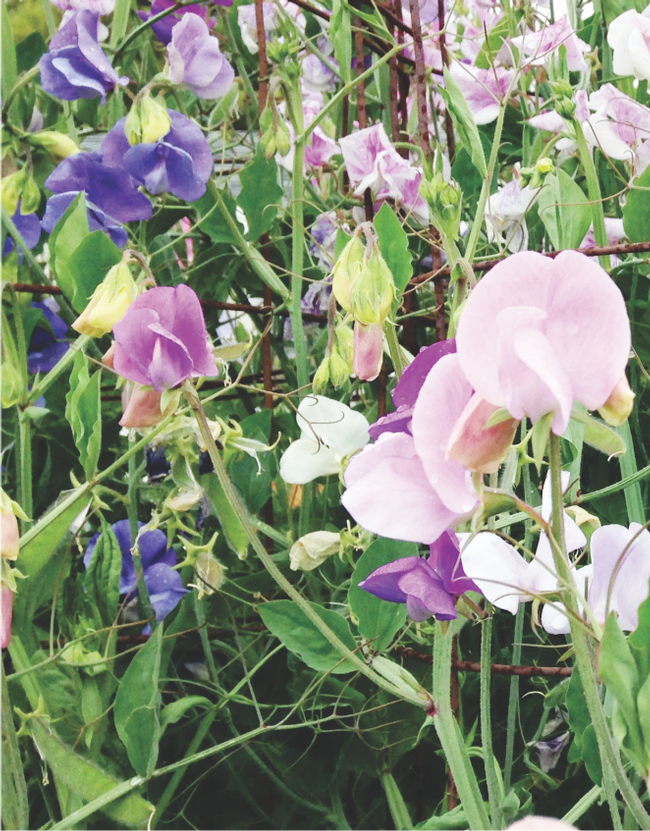Editor's note: Master Gardeners are keeping busy in their own gardens during Napa County's “Shelter in Place” directive. It's spring, it's getting warmer, it's a great time to work in the garden! Here's how Master Gardeners are spending their time:
By Linda McClimans
Sweet Peas- Lathyrus odoratus

Vine types can grow from 5-9 feet long and be grown over rocks, on the ground or can be trellised or grown on a fence. Bush types grow 12-30 inches, do not need support and can be grown as a border, in beds or in pots. Plants do best in full sun (minimum of 6-8 hours), but best with up to 16 hours of daylight. More light generally means more flowers. Plant in well cultivated soil rich with composed manure and keep evenly moist during the growing season. Mulching is suggested.
Use clean fresh seeds which should be soaked overnight. Any seed not swollen after soaking may be chipped (use a knife to chip or break through the skin on the seed.) Start in an unheated greenhouse, cold frame or right in the ground. Seeds usually emerge in about 10 days but it can take 2 weeks or more. Pinch out the growing tips when they are about 6-8 inches tall to stimulate lateral growth and bushiness. This is an especially good time to mulch if you have not done so yet. Fertilize with ½ strength liquid fertilizer twice during the growing season. Too much fertilizer encourages an abundance of foliage at the expense of flowers. Pick off spent flowers and seedpods to encourage new blossoms.
If you plan to grow sweet peas in the same spot next year, just allow the seedpods to dry and they will pop open and seeds will fall to the ground. Next year's flowers will grow from these seeds. If you wish to plant seeds in another area or to share with other gardeners, stop deadheading plants and the pods will begin to form after the flower dies. Begin saving seeds from pods after the shells turn brown and brittle. If harvested too early, seeds will not germinate. If you wait too long, the seedpods will break open and the seeds will fall to the ground. The process can take a couple of weeks so check them often. If the pods begin to split, pick them right away. Remove the seeds from the pods and lay on a flat surface lined with newspaper. Let the seeds dry for about three days. Once dry, put seeds in a freezer bag or Mason jar with a tight fitting lid to keep them dry. Store in a cool place until planting time. Pests include birds, slugs, snails, aphids and thrips.
I have found sweet peas easy to grow. I planted the seeds directly into the ground without soaking them. While they took a long time to germinate, they did. I have not been especially careful with the watering and yet my plants have grown nicely. I grew them in three separate beds and had a huge bird problem in only one of them. Every time the plants grew to about 2 inches tall, the birds took them back to 1 inch. Finally, I added mylar tape to the trellis (I used my tomato cages for trellising) and although the plants are way behind the others, they have finally started to bloom.
References:
UCIPM Sweet Peas- http://ipm.ucanr.edu/PMG/r280113211.html
Sunset Garden Book- 9th edition, page 400
Under the Solano Sun: Sweet Pea-Flower of the Month 4/11/2012
https://ucanr.edu/blogs/blogcore/postdetail.cfm?postnum=7236
During Napa County's shelter in place directive that protects everyone's health and safety, Napa Master Gardeners are available to answer garden questions by email: mastergardeners@countyofnapa.org. or phone at 707-253-4143. Volunteers will get back to you after they research answers to your questions.
Visit our website: napamg.ucanr.edu to find answers to all of your horticultural questions.
Photo credit: Linda McClimans